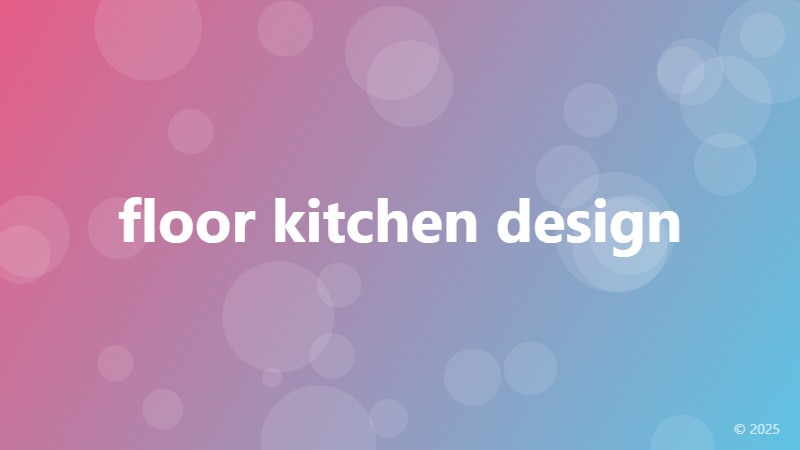floor kitchen design

Maximizing Space: Essential Elements of Floor Kitchen Design
When it comes to kitchen design, the floor plan is often the most crucial aspect to consider. A well-designed floor kitchen can make a huge difference in the overall functionality and aesthetic appeal of the space. In this article, we'll delve into the essential elements of floor kitchen design that can help you create a kitchen that's both beautiful and functional.
Understanding the Work Triangle
The work triangle is a fundamental concept in kitchen design that refers to the distance between the sink, stove, and refrigerator. A well-designed work triangle can significantly improve the workflow in the kitchen, making it easier to cook, clean, and socialize. The ideal distance between these three points is between 10 and 25 feet, with no obstacles or barriers in between.
Choosing the Right Floor Plan
There are several floor plans to choose from, each with its own advantages and disadvantages. The most popular floor plans include the L-shape, U-shape, galley, and island. The L-shape floor plan is ideal for small kitchens, while the U-shape provides more counter space and storage. The galley floor plan is perfect for narrow kitchens, and the island floor plan adds extra counter space and seating.
Optimizing Traffic Flow
Traffic flow is crucial in a kitchen, especially when multiple people are cooking or socializing. A well-designed floor kitchen should allow for easy movement between the work triangle, with minimal obstacles or bottlenecks. Consider using a circular or curved path to guide traffic flow and create a more open and airy feel.
Considering the "Golden Triangle" of Storage
In addition to the work triangle, there's another important triangle to consider in kitchen design: the "golden triangle" of storage. This refers to the distance between the sink, stove, and refrigerator, as well as the storage areas in between. A well-designed storage system can help keep the kitchen organized and clutter-free, making it easier to cook and socialize.
Adding a Touch of Style
Floor kitchen design isn't just about functionality; it's also about style and aesthetics. Consider adding a statement piece, such as a kitchen island or a bold backsplash, to create a focal point in the room. You can also use different materials, textures, and colors to add visual interest and create a unique look.
By incorporating these essential elements of floor kitchen design, you can create a kitchen that's both beautiful and functional. Remember to consider the work triangle, floor plan, traffic flow, storage, and style to create a space that meets your needs and exceeds your expectations.